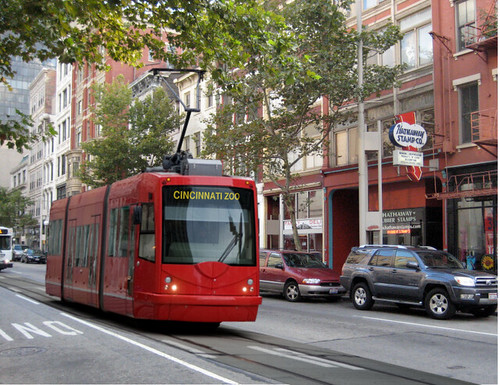Winners and losers in latest round of federal transit grants

Posted July 13, 2010 at 1:32PM
Last week, federal Transportation Secretary Ray LaHood announced $293 million in new federal grants for major transit improvements, including new streetcars, buses, and transit facilities. The Federal Transit Administration awarded the grants under two programs, funding six new streetcar and bus rapid transit projects (collectively $130 million) from the Federal Transit Administration's Urban Circulator Program, and 47 additional projects to upgrade bus services and facilities ($163 million) from the FTA's Bus and Bus Livability Program.
In a press release, FTA Administrator Peter Rogoff said, “Streetcars are making a comeback because cities across America are recognizing that they can restore economic development downtown – giving citizens the choice to move between home, shopping and entertainment without ever looking for a parking space. These streetcar and bus livability projects will not only create construction jobs now, they will aid our recovery by creating communities with the potential to be more prosperous and less congested.”
Streetcars and other Urban Circulator winners
The six cities that submitted successful Urban Circulator proposals include the following:
- Dallas ($5m for a short extension of an existing streetcar to link to DART light rail)
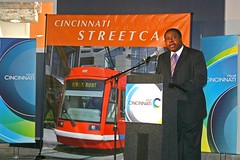 Fort Worth ($25m to support an ambitious one-way streetcar loop designed to connect commuter rail, a bus hub, and downtown, while stimulating redevelopment in distressed neighborhoods)
Fort Worth ($25m to support an ambitious one-way streetcar loop designed to connect commuter rail, a bus hub, and downtown, while stimulating redevelopment in distressed neighborhoods)- Chicago ($24.6m for BRT-priority lanes in the Loop)
- St. Louis ($25m for a streetcar to link light rail and several neighborhoods while spurring reinvestment)
- Charlotte ($25m for the first phase of a planned 10-mile streetcar route)
- Cincinnati ($25m for a six-mile streetcar route to link downtown, the recovering neighborhood Over-the Rhine, and the uptown University employment district)
According to the press release, the six projects were selected from 65 applications totaling more than $1 billion in requests.
Charlotte, Dallas and Chicago all have proven records in transit investment in recent years and, in a sense, are being rewarded for their commitment to public transportation. 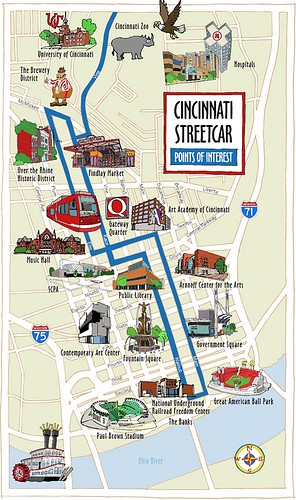 The other three cities, significantly, are all places that need help in restoring distressed neighborhoods. From what I can tell, the St. Louis route will not aid the restoration of the Old North neighborhood that I have been following for some time but, really, any assistance in public investment there is great news.
The other three cities, significantly, are all places that need help in restoring distressed neighborhoods. From what I can tell, the St. Louis route will not aid the restoration of the Old North neighborhood that I have been following for some time but, really, any assistance in public investment there is great news.
I’ve been following Cincinnati and, in particular, Over-the-Rhine with great interest. I believe, as do most of my friends there, that the streetcar can be a huge boost to the economic investment that OTR needs. The permanence of fixed-route transit (e.g., streetcar tracks) creates a long-term confidence for the business community in particular locations that cannot be matched by bus lines. Portland’s streetcar, for example, is said to have generated some $2.8 billion in investment along its route.
Randy Simes, writing in his blog Urban Cincy, says that with the new grant the city has now assembled $114.5 million of the total $128 million needed to fund the project. The city council has approved the project a number of times, and last fall a ballot measure was defeated that would have required a new referendum on any public spending for rail transit.
That said, the Cincinnati project still suffers some strong opposition. A poll taken by the Cincinnati Enquirer in May and reported by Barry M. Horstman revealed that residents opposed, by a 2-1 margin, the city’s plan to issue $64 million in bonds to pay for streetcar construction. Horstman reported that 48 percent of those polled described the project as “a waste of taxpayers' money,” compared to only 24 percent who said they believe it will help revitalize Cincinnati's core. 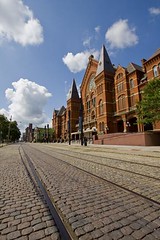 The opposition leadership seems to come from an odd pairing of anti-spending conservatives and the local NAACP. In January 2009, local NAACP president Chris Smitherman wrote President Obama:
The opposition leadership seems to come from an odd pairing of anti-spending conservatives and the local NAACP. In January 2009, local NAACP president Chris Smitherman wrote President Obama:
“The Cincinnati NAACP general membership opposes the streetcar plan because it does not believe that spending $200 million of taxpayer dollars on a trolley that runs 2-3 miles around the downtown area is a priority in the deep recession . . . ALL stimulus funding for capital improvements sent to our region should be mandated toward use for infrastructure repair and expansion, not pet projects that do not have broad consensus from the community.” (Emphasis in original.)
One hopes that the federal grant can obviate some of the borrowing and soften, somewhat at least, the anti-spending part of the opposition. Personally, I think the streetcar can bring great benefit to Smitherman’s constituents, and I hope the project can begin as soon as possible. (For an excellent ‘virtual tour’ of the planned streetcar route with great photos, go here.)
A big loser, close to home
A loser in the Urban Circulator sweepstakes, unfortunately, was Washington, DC, where I live and where the grant would have allowed near-term extension of the city’s initial streetcar route into Anacostia, the poorest part of the city. I strongly support the local streetcar, but the whole concept has become mired in debate over the aesthetics of overhead wires, which are currently banned in parts of the city, and mayoral-race politics.
I am not unsympathetic to the overhead-wire complaints, especially in certain parts of our city, which is beautiful as cities go partly because of longstanding attention to aesthetics. But that issue can be compromised, and should be. My own neighborhood is full of overhead utility wires (not that I love them), and we and our property values are doing just fine, thank you. 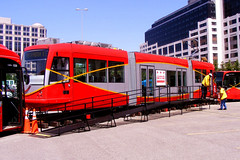 We can have them in most places where the streetcars will go and keep them out of the monumental core and possibly a few other locations where aesthetics should rule (underground technology exists but is expensive and imperfect). That offer has been on the table for a while now. But what was especially infuriating to me was a strongly worded letter sent to FTA opposing a grant for DC even though the part of the city where the initial line will go (and to which the grant would have been applied) is, like my own neighborhood, not subject to a ban on overhead wiring. (See the city’s response here.)
We can have them in most places where the streetcars will go and keep them out of the monumental core and possibly a few other locations where aesthetics should rule (underground technology exists but is expensive and imperfect). That offer has been on the table for a while now. But what was especially infuriating to me was a strongly worded letter sent to FTA opposing a grant for DC even though the part of the city where the initial line will go (and to which the grant would have been applied) is, like my own neighborhood, not subject to a ban on overhead wiring. (See the city’s response here.)
As for the mayoral politics, I am going to stay out of that one because, under federal law governing NRDC’s tax-exempt status, we cannot engage in ‘electioneering.’ I’ll just say that the opposition and foot-shuffling is really misguided and unfortunate, in my opinion.
Bus project winners
Back to the recently announced federal grants, the bus grantees comprise 47 projects in 31 states, chosen from among 281 applications totaling over $2 billion in funding requests.
Some of the particularly interesting bus projects include these:
- The Phelan Loop in San Francisco, designed to spur affordable revitalization
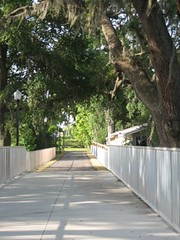 An intermodal terminal in historic Trinidad, Colorado, connecting Amtrak, Greyhound, and local transit in a mixed-use downtown neighborhood
An intermodal terminal in historic Trinidad, Colorado, connecting Amtrak, Greyhound, and local transit in a mixed-use downtown neighborhood- Another intermodal hub in Storrs Center, Connecticut, a LEED-ND pilot project
- A $1.5-mile, walkable ‘urban trail’ in Orlando (photo right)
- Support for a transit-oriented revitalization corridor in Baltimore
- Bike sharing in Boston
- Real-time, 24/7 passenger notification services in Pioneer Valley, Massachusetts
- A ‘health care circulator’ in Manchester, New Hampshire to link clinics and hospitals
- Bus rapid transit on 34th Street in New York City
- An integrated combination of fixed-route transit, multi-use trail, and extensive sidewalk improvements in Beaufort, South Carolina
- An intermodal center to link light rail, BRT and local buses in Provo, Utah
- Transit-oriented development support in South Salt Lake, Utah
- Better bus shelters in weather-challenged Racine, Wisconsin
The full list of awardees in both categories is here, and there’s some good commentary here.
Move your cursor over the images for credit information.
